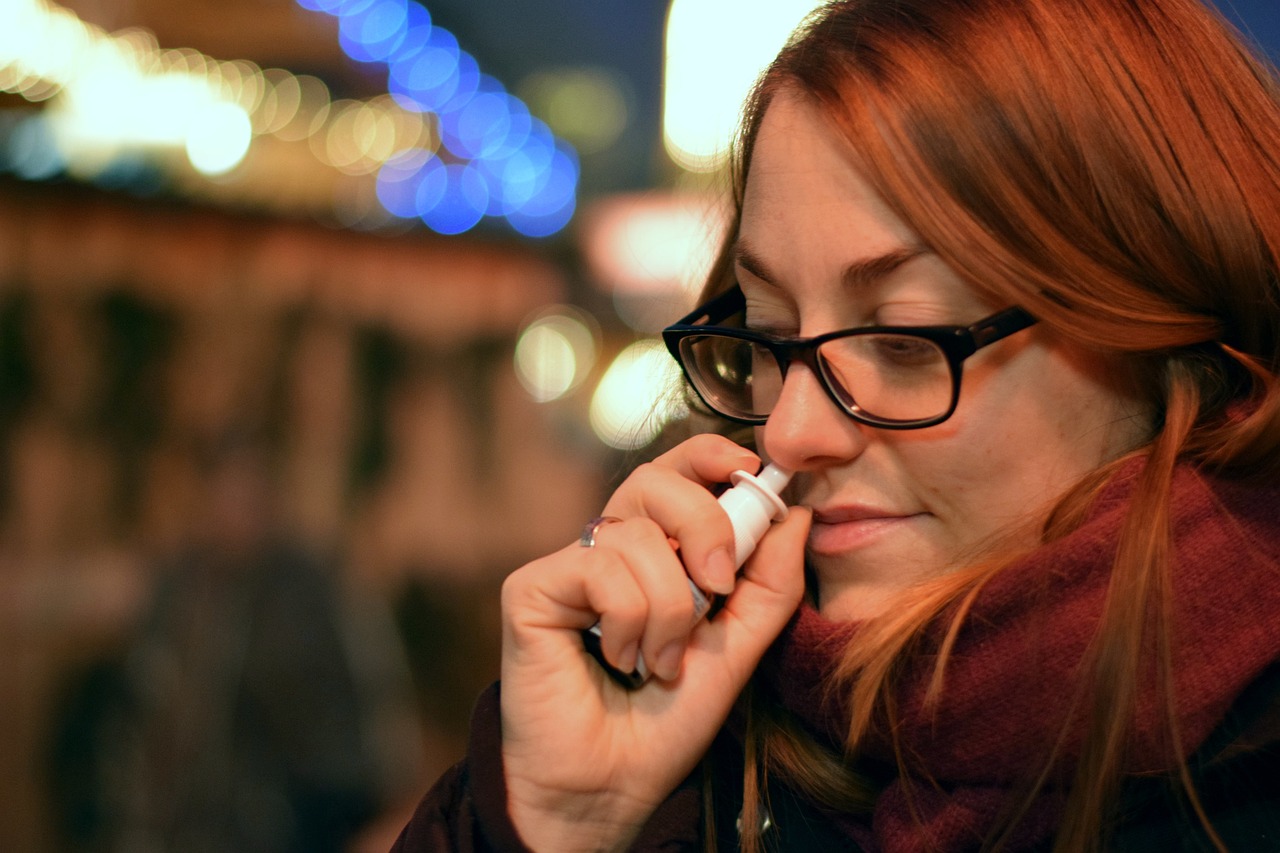EMA gives the green light to the first adrenaline nasal spray for the urgent treatment of allergic reactions
The Committee for Medicinal Products for Human Use (CHMP) of the European Medicines Agency (EMA) has recommended granting marketing authorisation in the European Union for Eurneffy (epinephrine), the first nasally administered medicine for the emergency treatment of allergic reactions. Anaphylaxis is the most severe form of allergic reaction that can occur within minutes of exposure to an allergen and can be life-threatening. Until now, treatment with epinephrine (also known as adrenaline) to reduce the anaphylactic reaction is done by intramuscular injection.

Vicky Cardona - anafilaxia nasal EN
Victoria Cardona
Head of the Allergology Department of the Vall d'Hebron University Hospital (Barcelona) and President of the Anaphylaxis Committee of the Spanish Society of Allergology and Clinical Immunology
Anaphylaxis is basically a severe and rapid allergic reaction that usually manifests with skin symptoms and affects other systems such as the respiratory, cardiovascular or digestive systems. The risk, although rare, is a fatal outcome. Rapid and effective treatment is therefore indicated. Currently, adrenaline administered intramuscularly in the lateral aspect of the thigh is considered the treatment of choice.
However, we know that many patients are reluctant to use adrenaline auto-injectors for various reasons: fear of injections, fear of adverse effects, or even because they do not want to have to go to an emergency centre afterwards, which is the usual recommendation.
The emergence of new devices that deliver the adrenaline dose by alternative routes such as intranasal nebulisation may help to address these fears. The published studies, although conducted mainly in healthy volunteers and not in patients during a reaction, seem to indicate good absorption of the drug and a good pharmacological effect. This could therefore be a paradigm shift in self-treatment by patients during anaphylactic reactions.
Ignacio Dávila - anafilaxia espray EN
Ignacio Jesús Dávila González
Head of the Allergy Service at the University Hospital of Salamanca, Professor at the Faculty of Medicine of the University of Salamanca and President of the Spanish Society of Allergology and Clinical Immunology
On 27 June, the Committee for Medicinal Products for Human Use of the European Medicines Agency issued a positive opinion on the initial summary for the approval of a nasal spray with a 2 mg solution of intranasal adrenaline with the following indication: "Emergency treatment of allergic reactions (anaphylaxis) due to insect stings or bites, food, medicines and other allergens, as well as idiopathic or exercise-induced anaphylaxis. The treatment is indicated for adults and children with a body weight greater than or equal to 30 kg".
This is certainly great news for patients suffering from these reactions, for allergists in particular and for physicians in general.
Anaphylaxis is an acute life-threatening systemic reaction resulting from the action of various compounds and factors. Its overall incidence is estimated to be 50-112 episodes per 100,000 people per year, with a recurrence rate in high-risk patients of 26.5-54%. Currently, the treatment of choice is the immediate administration of intramuscular adrenaline. However, there is a clear under-use of adrenaline in anaphylaxis, despite awareness campaigns. The main underlying reasons are fear of needles, lack of availability of the devices, forgetfulness, half-life, high cost or the inconvenience of having to carry the devices constantly.
Intranasal drug administration has been used for centuries. Typically, it has been used for the administration of various compounds (in the case of allergy, corticosteroids, antihistamines and alpha-adrenergic agonists) with the aim of exerting their action locally. More recently, however, the nasal route has also been investigated for the administration of drugs with systemic or central nervous system (CNS) effects.
The basis of nasal administration for systemic effect is based on the high vascularity of the nasal mucosa, the absence of a first-step effect in metabolisation and the rapidity of action, in addition to the ease of administration and the fact that it is non-invasive. Intranasal administration with the idea of achieving a CNS effect is based on the possibility of direct absorption through the olfactory epithelium, bypassing the blood-brain barrier.
In the case of adrenaline administration for anaphylaxis, rapid absorption and ease of administration are clearly useful advantages. Thus, in recent years, research and investment has been made in the development of this route of administration, with nasal spray administration of adrenaline in solution or powder form.
With regard to the very recent EMA ruling of a nasal spray with an adrenaline solution, studies have been based primarily on pharmacokinetic and pharmacodynamic evaluations comparing the availability and kinetics of nasally administered adrenaline compared to intramuscularly administered adrenaline in healthy subjects, leading to the excellent news referred to above. In addition, local effects have been acceptable and systemic effects have not differed from those of intramuscularly administered adrenaline.
However, questions remain. Firstly, it is not known how the preparation would behave in the treatment of anaphylaxis in a routine clinical practice situation; obviously, the investigators argue that such a study cannot be performed from an ethical point of view, although in a hospital emergency or allergy clinic setting, it would be feasible. In addition, it is not known how the preparation will behave in allergic patients, especially if they suffer from nasal conditions or receive nasal topical treatments that could interfere with absorption; or in obese patients; or in those with nasal polyposis or nasal interventions, among other possible factors that could influence the effectiveness of the treatment.
In any case, there is no doubt that this is excellent news, which opens up new perspectives in the management of anaphylactic reactions.
In the last three years, Ignacio Dávila has received conference fees from Allergy Therapeutics, Astra-Zeneca, Chiesi, Diater, GSK, Leti, Novartis, Sanofi; consultancy fees from Allergy Therapeutics, ALK-Abello, Astra-Zeneca, GSK, Merck, MSD, Novartis, Sanofi; and competitive project grants from Thermofisher Diagnostics, ISCIII and Regional Government of Castilla y León.



